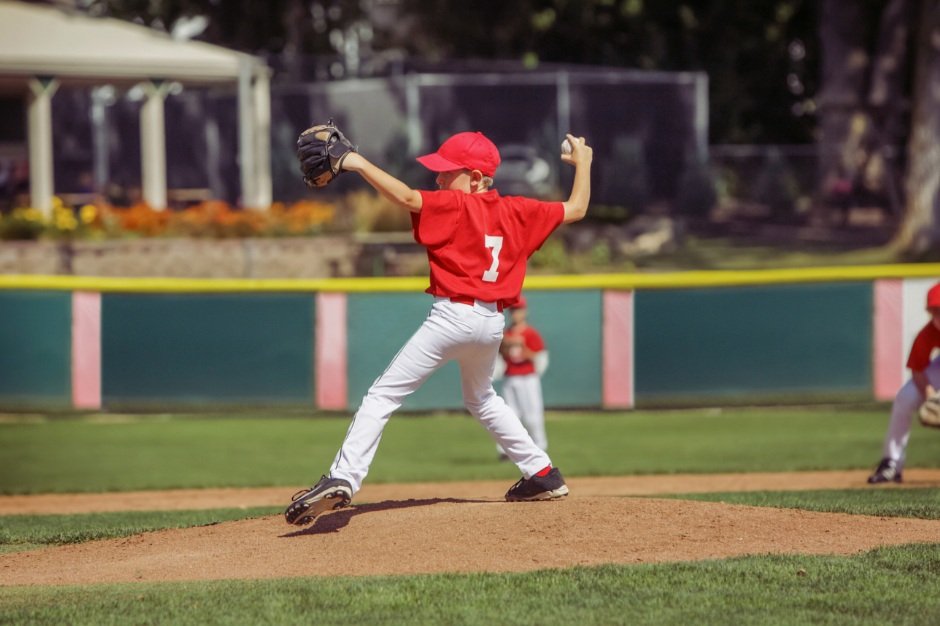Physical Therapy for Little League Shoulder
Little league shoulder is an overuse injury seen in young baseball players that results from repetitive stress placed on the shoulder and humeral growth plates from overhead throwing. Over time, without sufficient rest time for healing of the tissues, the repetitive stress of throwing can cause the growth plate to become injured, inflamed, and even fracture in severe cases. Physical therapists play a key role in helping young athletes with little league shoulder recover, addressing muscle weaknesses, range of motion restrictions, and throwing mechanics with a targeted sport-specific therapeutic exercise program.
Anatomy of the Shoulder Joint & Growth Plate
The shoulder is made up of three bones: the humerus, the scapula, and the clavicle. The humerus is the upper arm bone which contains the humeral head, the ball of the ball-and- socket joint of the shoulder (the glenohumeral joint). The scapula, or shoulder blade, contains part of the shoulder socket, the glenoid, and connects to the clavicle to form the acromioclavicular joint of the shoulder.
The glenohumeral joint allows the upper arm to rotate and provides for extensive range of motion for the shoulder. However, the hypermobility of the shoulder places the joint at a greater risk of instability. To prevent this, it’s essential that the muscles surrounding the shoulder be strengthened to maintain normal function of the joint.
In the humerus upper arm bone, just below the ball and socket of the shoulder joint, is a growth plate, a soft area of specialized cartilage. Growth plates exist within and near the ends of the long bones of the arms and legs. As children grow, growth plates are softer than the surrounding bone, but eventually harden and turn to bone when children finish puberty [typically ages 13-15 in girls and ages 15-17 in boys]. However, until the growth plates harden at the end of puberty, the growth plates can be prone to injury from repetitive stress placed on the shoulder from overhead throwing.
[Source]
What is Little League Shoulder?
Little league shoulder is an overuse injury seen in young overhead sports athletes, such as baseball, volleyball, and tennis players and swimmers. Young athletes are at a higher risk of developing little league shoulder if they play in highly competitive teams or play a single sport year-round. It is most commonly caused by throwing too many pitches in a single game or pitching too many games without sufficient rest, having poor throwing technique, or lack of muscle strength surrounding the shoulder to stabilize the joint during the throwing motion.
Little league shoulder is primarily seen in maturing children with open growth plates in the humerus bone and results from repetitive stress placed on the shoulder and humeral growth plates from overhead throwing. During an overhead throw, an athlete’s arm moves through several extreme positions that place the upper arm under significant pressure. Over time, without sufficient rest time for healing of the tissues, the repetitive stress of throwing can cause the growth plate to become injured, inflamed, and even fracture in severe cases. On an X-ray, the growth plate may have the appearance of growing wider or other abnormalities if the athlete has little league shoulder.
Little league shoulder may begin with tenderness and soreness at the shoulder that worsens over time. Symptoms of little league shoulder can include:
Pain in the shoulder when pitching or throwing
Shoulder soreness that lasts more than a day
Tenderness or swelling over the upper arm
Pain when lifting the affected arm
Decreased speed and accuracy when throwing
Physical Therapy for Little League Shoulder
Physical therapists play a key role in helping young athletes with little league shoulder recover, addressing muscle weaknesses, range of motion restrictions, and throwing mechanics with a targeted sport-specific therapeutic exercise program. Early treatment for little league shoulder is essential, as continuing to play through the pain can make the injury more severe. Initially, rest, typically for a period of three months, is prescribed to allow the growth plate to heal. Following this period of rest, physical therapy is critical to restore strength, endurance, range of motion, and coordination in the affected shoulder. Researchers have noted that following rest, physical therapy, and a graduated return to sport program, of the 266 participants assessed, 94% returned to sports participation and 92.5% returned to their pre-injury level of sport.
Physical therapy treatment for little league shoulder can include:
Manual therapy soft tissue massage and joint mobilizations to reduce soft tissue and tendon pain and restore normal joint mechanics and range of motion.
Therapeutic exercise targeting shoulder, rotator cuff, and scapular muscles to improve the strength, endurance, and performance of the shoulder. The therapist may also implement strengthening of the trunk, core, and hip muscles for a strong kinetic chain during the throwing motion.
Neuromuscular re-education to restore stability and retrain the upper extremity, improve proximal joint stability, and improve movement techniques and throwing mechanics.
Pain management modalities to reduce pain and inflammation such as ultrasound, electrical stimulation, and ice.
Return to sport program involving a gradual, progressive return to throwing and a thorough biomechanical assessment of the throwing motion for proper mechanics.
Home exercise program involving stretching, strengthening, and stabilization exercises.
Ages 7-8: 50 maximum pitches daily
Ages 9-10: 75 maximum pitches daily
Ages 11-12: 85 maximum pitches daily
Ages 13-14: 95 maximum pitches daily
Ages 15-16: 95 maximum pitches daily
Ages17-18:105 maximum pitches daily
It is critical that young athletes and baseball pitchers be given sufficient rest time from pitching to allow for healing of the tissues of the shoulder as well as extensive training in proper throwing mechanics and targeted strength and conditioning of the entire kinetic chain involved in the throwing motion.
Is your child experiencing persistent shoulder pain after summer baseball season? Work with a physical therapist to address sports-related shoulder pain and ensure your child regains function and strength in their shoulder!

